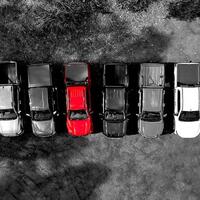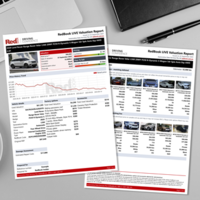The RedBook Insider: Are PHEVs Suddenly Relevant?
Maybe you’ve noticed, maybe not, though one thing for sure is that Plug-In Hybrid Electric Vehicles (PHEV) are making serious waves in Australia right now.
Much of this momentum can be placed squarely at the foot of last year’s government policy, exempting Battery Electric Vehicles (BEV) and PHEVs from fringe benefits tax under novated leases, though we think there is a little more to it.

Source: Vfacts
During recent travels to our RedBook China offices and client visits, we observed some interesting shifts in the world’s leading EV market. PHEVs are booming, so much so, that some of the biggest EV manufacturers are pivoting quickly to tool up to meet the demand.
It might surprise you, though, China also has many of the challenges that Australia faces when it comes to EV charging infrastructure. With such a vast country and much of it rural or regionally designated, pure BEVs are a challenging option, just like much of regional Australia. For this reason, PHEVs are growing rapidly in popularity and so are their capabilities.
Early PHEVs could only muster at best real world ~ 40km of pure EV range making them somewhat limited, even though the average capital city driver’s daily commute is under that, it put many buyers off as this tiny range came at a significant price premium. Fast forward to 2024 and we’re seeing PHEVs with real world electric ranges exceeding 100km and the capability to accept DC fast charging.
Possibly the only thing holding PHEVs back locally, is the significant premium they demand over the equivalent internal combustion engine (ICE) vehicle. Current top selling Mitsubishi Outlander PHEV commands upwards of $20,000 more, placing it lineball with many similar sized BEV entry models like the top selling Tesla Model Y. The recent launch of BYD’s Sealion 6 PHEV, starting from under $50,000 may alter the PHEV landscape and premiums prices being asked in a similar way as to how it’s stablemate the Seal shook up the BEV market.
So, is PHEV the answer to Australia’s migration to a greener vehicle parc?
At RedBook, we’re beginning to alter our view of what early on seemed to be a temporary and largely compromised powertrain. And it seems that we’re not alone, with carsales EV survey, indicating PHEVs (15%) are only marginally behind BEVs (19%) in respondent consideration, both trailing regular hybrids (25%).

Source: Vfacts
With battery innovation moving so rapidly, it is entirely reasonable to suggest that with smaller, lighter batteries delivering vast improvements in range at a lower cost, PHEVs should be a sure bet for Australia.
We’ve equally been largely starved of these powertrain options locally, and as the chart below illustrates more broadly for EV options. With the arrival of more options in recent times, especially for Utes and SUVs which Australian’s love, we feel that it has enormous potential to offer the best of both worlds. The ability to run emissions free or even tow with these vehicles places them at a unique advantage versus a pure BEV alternative.

Source: Carsales EV Survey Report May2024
RedBook expects PHEV consideration to improve strongly with the imminent arrival of category disruptors like the BYD Shark Ute in addition to a host of other PHEV options coming to market in the next 18 months. Will this see their historically softer future residual value outlooks begin to surpass that of BEVs, only time will tell.
Recent Posts
-
 The RedBook Insider: Emerging Divergence in the Popular 4x4 Ute Segment: Heavy-Duty Performance vs Hybrid-Electric Innovation30th September 2025
The RedBook Insider: Emerging Divergence in the Popular 4x4 Ute Segment: Heavy-Duty Performance vs Hybrid-Electric Innovation30th September 2025 -
 The RedBook Insider: Introducing RedBook LIVE: Smarter, Faster, and More Accurate Automotive Intelligence30th September 2025
The RedBook Insider: Introducing RedBook LIVE: Smarter, Faster, and More Accurate Automotive Intelligence30th September 2025 -
 The RedBook Insider: Introducing the RedBook Insider Webinar Series30th September 2025
The RedBook Insider: Introducing the RedBook Insider Webinar Series30th September 2025
